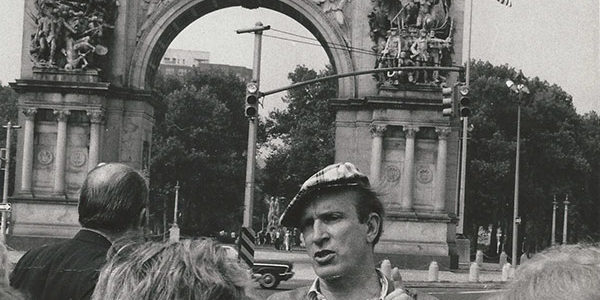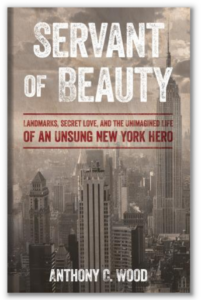
In Memoriam
October 14, 2013
Article from the Fall 2013 Newsletter
Through more than a half century of writing and activism, Henry Hope Reed was dedicated to raising public awareness of the classical tradition embodied in New York City’s built heritage and promoting the revival of classical design. Reed was outspoken in the media with his fervent opposition to post-WWII Modernist architecture and helped galvanize the historic preservation movement with a 1955 exhibition on New York City’s classical architecture co-sponsored by the Municipal Art Society (MAS). He then developed MAS’s well-known program of walking tours to encourage wider public interest in preservation, leading the first such tour himself in April 1956. Reed considered the walking tour to be the key method of introducing historic preservation to the general public, and by the 1960s he had developed tours in historic neighborhoods throughout the City. In 1966, Reed was named the first curator of Central Park by Parks Commissioner Thomas P. F. Hoving. In this role, Reed co-authored a historical guidebook to the park and decried commercial intrusions not in keeping with Central Park’s original design. In 1968 Reed helped to found the not-for-profit organization Classical America, the mission of which was to reprint texts on classical art and design, as well as to publish new works on the classical tradition in art and architecture. In 2002, Classical America merged with the Institute of Classical Architecture to form what is now known as the Institute of Classical Architecture & Art. Reed continued to work with the organization and write on architecture and preservation until his death this year at age 97.
Thomas Roberts, a successful New York City banker, maintained a lifelong passion for nautical history inspired by his childhood on the south shore of Long Island. Roberts channeled this enthusiasm into an inspirational movement to restore and maintain the historic Fire Island Lighthouse. Built in 1858 on the western end of the barrier island, the 170-foot-tall black-and-whitestriped lighthouse was in service until 1974. An important landmark for transatlantic ships coming into New York Harbor, the Fire Island Light, as it is called, was many immigrants’ first glimpse of America. To prevent demolition of the decommissioned structure, Roberts founded the Fire Island Lighthouse Preservation Society in 1982. In its first four years, the society raised $1.2 million through broad community support, helping to fund repairs to the lighthouse, the conversion of the lighthouse-keeper’s cottage into a visitors’ center, and the relighting of the historic beacon. In 1986, Roberts himself triumphantly pulled the switch that relit the lighthouse in a ceremony witnessed by thousands, including hundreds of spectators watching from boats. With Roberts’ continuing leadership, an agreement was reached with the National Park Service in 1996 that allowed the society to take over operations of the lighthouse as a maritime museum. This agreement became the model for provisions in the National Historic Lighthouse Preservation Act of 2000 and inspired many lighthouse preservation campaigns across the country. The Fire Island Lighthouse remains open to the public, and draws 200,000 visitors a year. Roberts passed away at the age of 75 on June 17, 2013.




